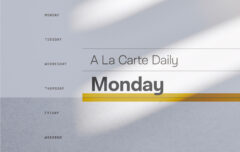 The iPad has proven itself a game-changing medium in many ways, not the least of which is in being a medium that Christians can use to share the good news of Jesus Christ. A few weeks ago I came across a fascinating app called The Book of Revelation App, a graphic novel adaptation of Revelation. I have been enjoying the app and recently got in touch with Chris Koelle, the artist, to ask him about the project. I hope you enjoy this interview.
The iPad has proven itself a game-changing medium in many ways, not the least of which is in being a medium that Christians can use to share the good news of Jesus Christ. A few weeks ago I came across a fascinating app called The Book of Revelation App, a graphic novel adaptation of Revelation. I have been enjoying the app and recently got in touch with Chris Koelle, the artist, to ask him about the project. I hope you enjoy this interview.
Tell me a little bit about yourself–who you are, where you go to church, and so on.
I’ve been doing art and freelance illustration full-time for about 7 years now. Alot of my work has been providing illustration for books, graphic novels, documentaries, and album art for CDs and vinyl records. My wife Annie is one of the most wonderfully inspiring and passionate artists I know. We have a 4-year-old son named Marshall. We are, with much joy, a part of Downtown Presbyterian Church in Greenville, SC. I love a hot mug of strong coffee, cold, grey sweater weather, experimental music of all sorts, and intaglio printmaking, among other things.
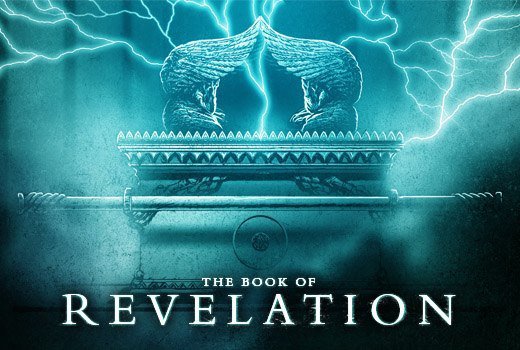
Why did you decide to make a graphic novel adaptation of the book of Revelation?
Well, at first, it wasn’t really my idea at all. The big decision to create a graphic novel adaptation of The Book of Revelation was a very thought-out, much-discussed collaborative one. Here’s some backstory…
In 2009 I was commissioned to illustrate a 130-page graphic novel written by L.A.-based Matt Dorff (the adapter of the Revelation script), titled Battle Surgeon. The story recounts in gritty detail the experiences of a brilliantly gifted Navy surgeon, suffering from post-traumatic stress disorder, who is sent to Afghanistan on a top-secret mission. Throughout the course of this year-long project that explored issues of life and death, hope and despair in the face of suffering, Matt and I grew closer as collaborators and friends. Gradually our long-distance conversations began involving friendly discussions of our personal lives. I was open about my personal life of faith and my relationship to Jesus, the Gospel, and the Church, just as Matt, who considers himself an open-minded skeptic who loves a great story, was growing increasingly interested in these things–faith, the person and work of Jesus, the Apostles, etc. And so, from coast to coast, through phone calls, Skype, and email, our relationship was cultivated over the year.
After finishing Battle Surgeon, we kept in contact and eventually began having talks about what our next collaboration might be. During the summer of 2010 I was commissioned by The Austin Stone to create about 50 illustrations for The History of Redemption, a beautiful retelling of the great metanarrative of the Bible, using only Scripture verses. Meanwhile, as Matt became more fascinated by the power of the ancient Biblical narratives through the Old and New Testaments, especially the story of the Gospels and the early Church, we began discussing the idea of adapting some of these ancient texts in a fresh, graphic way. Matt Dorff eventually proposed the idea of creating a fully-illustrated graphic novel of The Book of Revelation, to be initially released serially on iPad and iPhone, with other formats to follow.
To be honest, at first, the idea seemed (to me) laughable because of its ambitious scope and complexity, and then the prospect simply became paralyzing. A fully-illustrated, moment-by-moment visualization of the entire Book of Revelation had never really been done before. In the end, it was a once-in-a-lifetime opportunity, and after some time I agreed to take up the challenge. It’s been a wild ride, for sure.
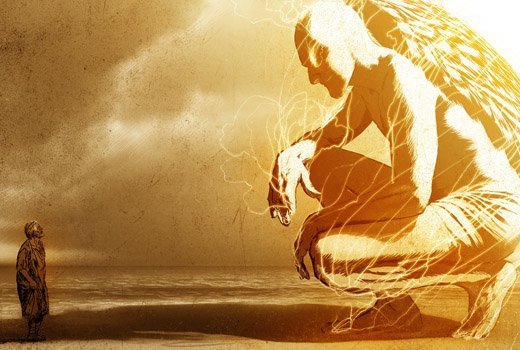
Why did you decide to combine the drawings with a fresh translation of Revelation? Was this purely logistical (so you wouldn’t have to license the use of an existing translation) or was there some ideology behind it?
This was primarily a decision between Matt Dorff and one of the co-translators, Father Mark Arey, Director of the Greek Orthodox Archdiocese of America. They were introduced to each other through actor Chris Diamantopoulos (producer), with whom Matt had worked on various film projects. After Matt read the translation, he proposed to Father Mark the idea of creating a graphic novel of the text for the digital age. The translation really is so colorful and vivid in its language, it was perfectly suited for a graphic adaptation. More details on Mark Arey and the translation can be read on the RevelationApp Facebook page here.
There has been no shortage of things I’ve enjoyed in the app so far, but let me point out a few favourites. I love the way you portrayed the 12 Sons of Israel. You had to draw 12 brothers, one portrait for each of them, and without any physical descriptions to go on. Yet you made them all look distinctive and each one has character that is all his own. It’s a simple part of the book but one you gave a lot of time and attention to. I also really like the way you portrayed the Laodicean church as the man sees his dim reflection in the water and sees that he is “wretched and pitiful, destitute, blind, and naked.” And, of course, I’ve got to make mention of the Four Living Beings that are within the throne and around the throne. What has been the most difficult challenge so far?
It’s almost impossible to single out just one as the most difficult so far. Deciding how to depict the seven-horned, seven-eyed Lamb in a fresh but meaningful, reverent, appealing way was extremely challenging, the result of hours of discussion and debate between myself and Matt Dorff. The introduction of the Dragon and the subsequent events in Chapter 12 were quite a painstaking, time-consuming process. Any scenes representing God / the One on the throne are of course very intimidating, even if only because of having to decide what *not* to show. That maybe one of the most difficult challenges overall: overcoming the instinct to always want to reveal more detail or atmosphere; choosing my illustrative battles wisely. There are only so many hours in a day, and pacing myself to invest just the right amount of time and energy into each illustration–nothing more, nothing less–is a continual challenge of decision-making and problem-solving I must face head-on, panel by panel, day after day, week after week, month after month. Like I said, it’s a marathon of marathons!
I can’t deny that I was slightly surprised and even a little disappointed at your treatment of the Nicolaitans. Though it’s not quite sexually-explicit, it’s certainly a little bit suggestive. From my research it seems like historians aren’t entirely certain what the sins of the Nicolaitans are. Why did you choose to make them sexual in nature?
Let me start off by saying that each step of the way throughout illustrating the book is very much thought-through and heavily discussed among myself, Matt Dorff, and Mark Arey. With any given text, while continually striving to be true to the text and maintain a point of view from John’s own understanding of his world, we are always asking ourselves, “What is the most visually interesting, emotionally resonant image to illustrate or add insight to this part of the text?”
You’re correct in that scholars aren’t exactly certain what the specific sins of the Nicolaitans were. At the same time, in some of our research, overindulgence and polygamy were among the possible sins cited by some sources. On one hand, we simply wanted an emotionally striking depiction of what they very well may have been doing that Jesus and the church at Ephesus “despised.” So we eventually arrived at a depiction (suggestive, not explicit) implying male domination, sexual abuse, indulgence, and polygamy. We were aware that this was one of the specific points in the art that would likely raise some eyebrows among the Christian community. Sexual abuse is all too real today as it was then, and I attempted to evoke a sense of disgust with it (the dark, cold light, the shadowed secrecy, the enslavement of the women).
I might also add that some of the images were actually more explicit in their initial state, and we did exercise discernment in what to show or not show, what to suggest, doing our best to thoughtfully consider our more sensitive readers, while not shying away from what the text seems to be getting at. This approach goes for the entire book. We’re definitely trying our best to respect the text and respect its readers!
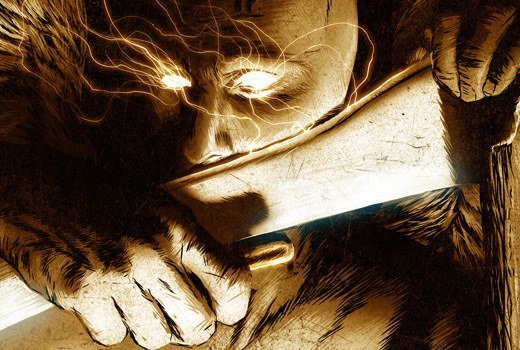
What are some of the ways that working on this app has been important in your spiritual walk?
That’s a great question, with a few different answers. On one level, just the immense challenge of the workload itself has caused me to feel utterly dependent on God for mental and physical stamina. Sometimes just knowing what to draw, or how to draw it, feels like running on a treadmill in my heart and mind, and a year-long project such as this is indeed a marathon of marathons! So God has been very tangibly teaching me to trust Him for strength and wisdom in basically handing over my energies in service of this task that has been given to me for the time being. In spite of my own personal weaknesses (artistically, physically, conceptually, spiritually), even in them, God’s grace is seen and felt to be sufficient, energizing me and even my wife to serve a purpose much larger than ourselves, because He is totally sufficient.
In perhaps a seemingly more direct way, there are definitely profound moments when I find myself worshiping God, worshiping Jesus Christ, through reading and meditating on the Scripture text, whether it’s John’s terrified vision of the glorified Christ in Chapter 1, or the seemingly weak, mortally wounded, supremely worthy Lamb standing triumphant with the scroll firmly grasped in his scarred hands in Chapter 5, or the slippery newborn baby boy–”a Son Who will shepherd the Nations with a rod of iron”–rescued from the jaws of the Dragon in Chapter 12. At the very end of Chapter 12, there is a scene in which a little boy, the only son of parents who are faithful believers in Jesus, is killed by a ravenous wolf. The text reads, “Then the Dragon went wild with rage because of the Woman and set out to attack the rest of her offspring, who persevered in the commandments of God, witnessing to the testimony of Jesus.” (12:17) The chapter ends with the father and mother holding the bloody, lifeless body of their only son, reminiscent of the Pietà. I used my self, my wife, and my son as the models for these scenes. God forbid that I ever lose my son; words cannot express my love for him. But it is a sobering reality that sometimes terrible, senseless suffering is attempted by Satan to destroy the faith of the believing, and often it is by attacking and destroying what is so precious (seen so vividly in The Book of Job).
So in these ways, through basically a very prolonged meditation on this Scripture text, I see and feel the Word confronting my own faith (or lack of faith) in God and in the testimony of Jesus, who is the both the Lion of the Tribe of Judah, and the Lamb Who was slain.
What is your philosophy on drawing images of Jesus Christ? And how will you represent God without actually drawing what is un-drawable? Are you concerned about possibly violating the 2nd commandment?
I remember in my college days, among my Christian professors, art instructors, and fellow art students, the idea of representing Jesus and/or God in visual art was, for the most part, regarded with solemn caution and obligatory reminders of the 2nd commandment and its application for our contemporary culture. I think the general climate / idea was that because Jesus was/is the Word of God made flesh, and since God has given the world the sufficient revelation of Himself most fully in Jesus and in the objective written Word about Him, then visual depictions of Jesus and God were, by contrast, purely subjective, and therefore potentially very misleading. The concept of idolatry would inevitably come up in discussions about representing God in visual art (which people have been doing for centuries). But it seems clear to me now that idolatry is, at its root, hoping and trusting and being captivated by something other than God to be and do what only God is and does. The sin of idolatry is not merely the worship of some physical object or visual image for its own sake. At the same time, we cannot help but deeply enjoy things that are beautiful simply for their beauty. Being in the presence of something beautiful is its own reward (think of music, art, or sublime experiences of the natural world).
But the Israelites knew that the Egyptian and Canaanite cultures believed that to get what you want in life, you have to learn how to manipulate “other gods.” These “other gods” were associated by an object that represented them. Yahweh had made it undeniably clear to His people through the plagues and the miracles of the exodus that He was in sovereign control over every aspect of creation. He was not confined by aspect of creation or physical form, and so ought not to be represented by any object for the purpose of worship.
To be perfectly honest, I really don’t like having to visually represent Jesus Christ or the invisible God! But I’ve taken on the job of illustrating The Book of Revelation, verse by verse, and I’m trying to respect the Scriptures and, I hope, evoke in readers (and in myself!) at least some hint of what God is like, as He’s revealed himself through the law and the prophets and through Jesus. I do take this very seriously. John says, according to his eyes, “the One Who sat on the throne was like an epiphany of jasper and sardius–deep translucent bloodstones both.” (4:3) What in the world should we be thinking when we read that? Prismatic, cubistic refractions of red and white light? Why? Let’s think about it. There’s also a green emerald rainbow around this One on the throne, says John.
There are so many signifiers for God Himself throughout the Scriptures. Fire, smoke, earthquakes, wind, darkness, an epiphany of jasper and sardius, a loving father, an unblemished lamb… the list goes on. He is of course not merely these things (pantheism). But the experience of God’s presence through these things happened in the presence of real people–the people of God. We know God is an invisible Spirit. He is most definitely undrawable, I confess! But I believe He wants to shake us out of our stupor of unbelief and bring us to worship Him, and sometimes that’s facilitated by arresting metaphors and physical, visual experiences and visions. If I can weakly attempt representing some of those clues we’ve been given through His word and see some peoples’ reactions of worshiping God, then mission accomplished: glory to God!
Jesus Christ was a hard-working Jewish carpenter who totally loved kids and outcasts and who eventually was tortured and killed on the same earth we find ourselves on. So that’s something to be reminded of, visually, however imperfectly, to help us love Him more. Jesus Christ is also “the radiance of the glory of God and the exact imprint of His nature, and He upholds the universe by the word of His power.” (Heb.1:3a) John, the beloved disciple, was totally mortified when he saw the glorified Christ in Revelation 1: “When I saw Him, I collapsed at His feet like one dead.” That is also something that would do us well to meditate on and imagine, with the goal of worshiping God “in spirit and in truth.” John’s vision was recorded for us to read and imagine and worship the triune God. My job just happens to be imagining these things a little more vividly for the time being.
I’d also like to add that Francis Schaeffer’s Art & The Bible has been extremely influential in shaping my philosophy of art. Highly recommended!
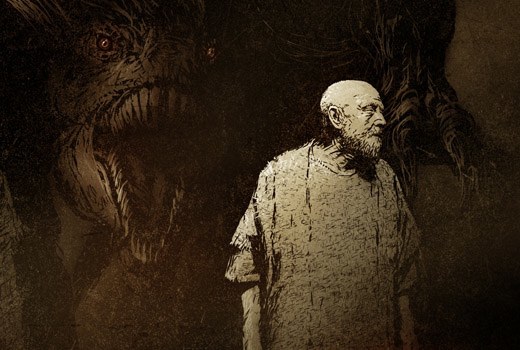
The visual medium is very, very powerful, and perhaps especially so in our culture where it seems to be preferred to the word. Yet God chose to give us the Word, not the Picture. Do you think there’s any concern that people might read this graphical adaptation of the Bible and prefer it to the Word that God gave us? What is the relationship between this graphic version of the bible and the “real” Bible?
You’re right. People will always love pictures, whether static or moving. Because of the kind of work I’m doing, “illustrating” the written Word, I’ve thought about this tension quite a bit. God gave us the Word, and He also gave us our five senses and the imagination–for His glory, as means of worshiping Him above all else. It’s inevitable that people will gravitate towards provocative images as opposed to black words a white page. I think that fact is one of the causes for creating this illustrated work. The RevelationApp creators and I would hope that this graphic version of the Word would ultimately compel people to look more intently at the Word itself. Honestly, I think of the imagery as nothing but big flashing arrows pointing to the whole Bible, saying, “Look at what this is actually saying!” Or at least, “Look at what this might be saying!”
God and I both know that I’m goofing up left and right (I joke with friends that John must be looking down just laughing at me this whole time–”You got it all wrong! LOL”). I have no delusions about my hermeneutical prowess. But making pictures for this text is my job for now, and I’m giving it my best shot. I’d hope that some of the imagery, however ambiguous or explicit it may be, would help people to take the Scriptures themselves more seriously, more worthy of deeper investigation and meditation. There are so many visual metaphors and descriptions from other parts of the Bible (both the Old and New Testaments) that have informed certain aspects of the artwork throughout. These are ongoing attempts at letting the Word inform my imagination and the imagery.
Growing up under countless hours of preaching, often during any given sermon I’ve had the convicting realization that the preacher’s “sermon illustration” felt more interesting, more captivating than the infinitely more worthy Reality behind the illustration. It is a sad (and potentially disastrous) thing to be more interested in a shadow than the true Substance, and that signifies a lack of knowledge of God and misplaced worship. I’d hope that this illustrated adaptation causes some people to be more deeply affected by what the text is actually saying–about God, about Jesus, about people, about sin, about the world itself–resulting in more spiritual and more truth-based worship of God as He has revealed Himself through Jesus and the Word.
It may be a little bit early to be asking this, but do you intend or hope to create adaptations of other books of the Bible?
I’ve seen The History of Redemption and John Piper’s Job (out of print) both resonate so deeply with so many people, so I’ve been working to further spread these experiences in various formats such as licensing packages for church community events and motion graphics movies. As for future Biblical projects, it’s definitely possible. But, let’s just say I plan on taking a vacation after I finish Revelation.



